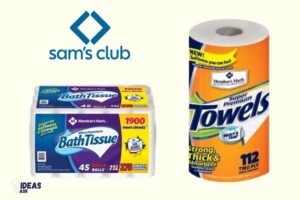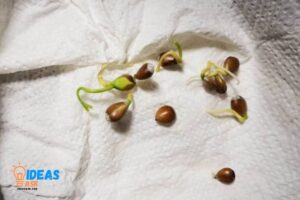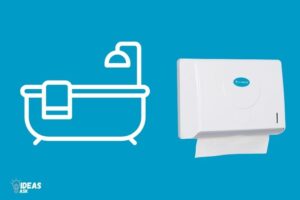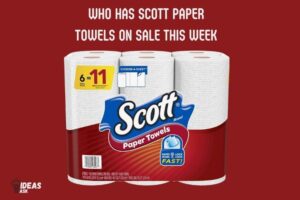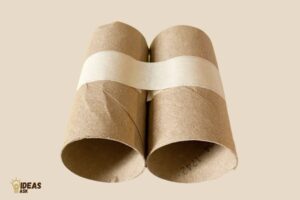How Are Bounty Paper Towels Made
Bounty paper towels are made by combining wood pulp and water, pressing the mixture to remove excess water, and then drying and cutting the resulting paper into individual sheets. Bounty paper towels are a staple in many households, known for their absorbency and durability.
But have you ever wondered how they are made? The process starts with the combination of wood pulp and water, which is then pressed to remove excess water. The resulting paper is then dried and cut into individual sheets. The absorbent material is created by using a special manufacturing process that creates tiny air pockets within the paper fibers.
These air pockets allow the paper towels to absorb and hold large amounts of liquid. Additionally, the paper towels are designed to resist tearing and disintegrating when wet, making them a reliable choice for household cleaning tasks. Whether you are cleaning up spills or wiping down surfaces, bounty paper towels are a reliable choice that is sure to get the job done.
Raw Materials Used
Explanation Of The Types Of Raw Materials Used In The Production Of Bounty Paper Towels
Bounty paper towels are a popular household essential, known for their absorbency and strength. Here is a brief explanation of the different raw materials used to create the much-loved paper towels:
- Cellulose fiber: This is the primary component of bounty paper towels. The pulp is made from wood chips, which undergo a chemical pulping process to remove impurities and extract the cellulose fiber.
- Latex banding: Latex is added to the paper towel’s surface to improve strength and prevent tearing.
- Water: Water is used as a solvent to mix the other raw materials together efficiently.
Discussion On How The Raw Materials Are Sourced And Their Quality Standards
The raw materials used in the production of bounty paper towels are sourced from reputable suppliers, who comply with stringent quality standards. Here are some key points about the sourcing and quality standards for the raw materials:
- The wood chips used to create cellulose fiber are carefully sourced from sustainable wood sources, ensuring minimal impact on the environment.
- The suppliers of latex banding undergo a rigorous selection process, ensuring that they comply with stringent quality standards.
- Bounty’s production process uses only purified water, screened to ensure that it meets high-quality standards.
Explanation Of How The Raw Materials Are Prepared For The Manufacturing Process
The process of preparing the raw materials for the manufacturing process is essential for the quality and strength of bounty paper towels. Here is a brief explanation of how the raw materials are prepared:
- The wood chips are chipped and immediately sent to the pulping plant to avoid contamination and degradation.
- The cellulose fiber is extracted from the wood chips using a chemical process that removes impurities and lignin.
- The latex banding is mixed with water and added to the cellulose fiber mixture. The mixture is then spread onto a wire mesh and passed through a series of rollers to remove excess moisture and create the final product.
Step 1: Pulping
Overview Of The First Step In The Manufacturing Process
The first step in making bounty paper towels is pulping, which is the process of breaking down wood into a pulp. This pulp is then cleaned before it’s used to make paper.
Discussion On The Use Of Recycled Paper Fibers
Recycling paper fibers is a key part of creating sustainable products like bounty paper towels. By using recyclable fibers, the process of obtaining wood pulp is much less damaging to the environment.
Detailing How The Paper Fibers Are Mixed With Water And Other Additives
After the pulp has been cleaned and inspected, it’s mixed with water and other additives. The mixture is stirred until the fibers are evenly distributed. The additives ensure that the paper is strong and durable enough to function as a paper towel.
The Importance Of Even Mixing
Mixing the fibers thoroughly is crucial to the quality of the final product. If the fibers aren’t evenly distributed, the paper towels could tear and not absorb as much liquid. The process of mixing is carefully monitored to ensure that each batch of paper towels is consistent.
Testing Paper Quality
Once the fibers have been mixed, the paper is tested for quality. This process checks if the fibers are evenly distributed and the paper is strong enough to be turned into paper towels. If the paper passes these tests, it moves on to the final stages of production.
Additional Considerations
Throughout the manufacturing process, bounty paper towels are carefully inspected and tested to ensure that they meet quality standards. The company also strives to use sustainable practices, like recycling fibers and sourcing raw materials responsibly.
Putting It All Together
By pulping recycled paper fibers and carefully mixing them with other additives, bounty paper towels are created through a process that emphasizes both quality and sustainability. The end result is a product that’s strong, durable, and perfect for cleaning up spills and messes.
Step 2: Pressing
Explanation Of The Second Step In The Manufacturing Process
Bounty paper towels are a household staple, known for their absorbency and durability. Have you ever wondered how they are made? The process of creating bounty paper towels has several steps, and each step is crucial to the final product’s quality.
This post will explain the second step in the manufacturing process: pressing.
Description Of How Pressing Removes Excess Water And Creates Paper Sheets
After the pulp is cleaned and refined, it’s time to turn it into paper. The pressing stage involves flattening large rolls of the wet pulp using heavy rollers, which remove excess water and compress the fibers into flat sheets. This compressing process forms the base of each paper towel.
The sheets of paper are then wound onto large rolls and sent to the next phase of the process.
Highlighting The Role Of Heat And Pressure In This Step
The pressing step is done with a combination of heat and pressure. By applying heat and pressure, the excess water in the pulp evaporates, leaving behind compressed paper fibers. This process not only removes moisture but also strengthens the paper fibers and produces flat sheets of paper that are ready to become absorbent, high-quality paper towels.
The heat and pressure used in the pressing step are carefully controlled to ensure consistency and quality across all the paper towels produced. This step is fundamental in creating the texture, absorbency, and strength of the paper towels we rely on every day.
The pressing stage is an essential phase in the manufacturing of bounty paper towels. It removes excess water from the pulp and creates flat sheets of paper through heat and pressure. The result is the high-quality, absorbent paper towels we know and love.
Step 3: Creping
Overview Of The Third And Final Step In The Manufacturing Process
After the paper is dried and pressed, it moves onto the third and final step in the manufacturing process: creping. This step gives a unique texture to bounty paper towels, making them absorbent and strong.
Description Of How The Creping Process Creates The Unique Texture Of Bounty Paper Towels
Creping involves scraping the damp paper off hot cylinders in a process called “creping. ” This gives the paper towels their unique texture by bending the fibers in the paper. Creping also introduces tiny air pockets into the paper towel, giving it greater absorbency and strength.
During the creping process, the following steps occur:
- A doctor blade, a sharpened metal strip, shaves the paper off as it moves across the heated dryers.
- The paper adheres to the yankee cylinder, which is a large steam-heated drum.
- The creping blades scrape the paper from the yankee cylinder, causing the fibers to stretch and to form tiny air pockets.
- The creped paper moves to a reel, which rolls the bounty paper towels into finished products.
Detailing How The Paper Is Dried And Rolled Into Finished Products
After the paper is creped, it moves to the final step of production. The following steps turn the creped paper into finished products:
- The creped paper is cut to the right size by a saw.
- The paper is then wrapped, packaged and sent to retailers for purchase.
- From the retailer, consumers can buy bounty paper towels easily, and it comes in rolls with various sheet counts per roll.
The unique manufacturing process of bounty paper towels involves three critical steps, and each step is crucial in creating the high-quality paper towels that consumers have come to expect. Bounty’s paper towels are so strong and absorbent that many consumers rely on them for cleaning up messes and spills around the home.
So, ensure that your bounty paper towels are readily available, and remember the journey they undertook while being manufactured when using them for clean-up purposes.
Quality Control
Explanation Of The Multiple Quality Control Steps In The Manufacturing Process
Bounty paper towels are known to be one of the most absorbent and durable paper towels on the market. There are several quality control steps that are taken during the manufacturing process to ensure that each roll of bounty paper towels meets the high standards set by the company.
Here are a few of the quality control steps involved:
- The pulp used to make the paper towels is inspected to ensure that it meets the company’s standards for quality and cleanliness.
- The paper is thoroughly tested during the manufacturing process to ensure that it is properly bonded together to create a strong, durable sheet.
- Each roll of paper towels is tested for absorbency, with the company measuring how much water each sheet can hold.
- The perforations between each sheet are tested to ensure that they are properly placed and easy to tear.
Discussion On How Bounty Ensures Consistency In Product Quality And Performance
Consistency is key when it comes to manufacturing any product, and bounty paper towels are no exception. The company takes several steps to ensure that each roll of paper towels is consistent in terms of quality and performance:
- The manufacturing process is carefully monitored to ensure that each sheet of paper is made to the same exacting standards.
- The paper towels are tested regularly to ensure that they are still meeting the company’s high standards. If any issues are found, adjustments are made to the manufacturing process to correct the problem.
- The company also uses customer feedback to continuously improve the product. If customers report any issues with the quality or performance of the paper towels, the company takes steps to address those concerns and improve the product.
Highlighting The Importance Of Quality Control For Customer Satisfaction
Quality control is critical for any product, but it is especially important when it comes to something like paper towels. Customers expect their paper towels to be absorbent, durable, and easy to use, and they are likely to be disappointed if the product falls short in any of these areas.
By taking quality control seriously, bounty is able to ensure that its customers are consistently satisfied with the product they are getting. At the end of the day, happy customers are what drives the success of any business, and that’s why quality control is such an integral part of the manufacturing process for bounty paper towels.
Frequently Asked Questions On How Are Bounty Paper Towels Made
Q1. How Are Bounty Paper Towels So Absorbent?
Bounty paper towels are made of a blend of virgin wood pulp that undergoes a unique process to create more air pockets, absorbing more liquid per sheet.
Q2. How Many Layers Do Bounty Paper Towels Have?
Bounty paper towels are made of one layer of highly absorbent pulp with small air pockets that boost absorbency.
Q3. How Strong Are Bounty Paper Towels?
Bounty paper towels have a two-ply construction that makes them stronger. Plus, the absorbent material helps keep them from falling apart, even when wet.
Q4. Can I Use Bounty Paper Towels For Cleaning Up Spills?
Yes, bounty paper towels are made to be super absorbent and can work well for cleaning up spills. They’re also strong enough for cleaning tasks.
Conclusion
Finally, after learning how bounty paper towels are made, we can appreciate the science and technology behind it. From the selection of raw materials, the preparation of the pulp, the pressing and drying, to the final packaging – each step is carefully designed for the perfect balance of strength, absorbency, and softness.
By using responsibly sourced trees and renewable energy, bounty ensures sustainability throughout its production process. As a consumer, we can make an informed choice when we purchase bounty paper towels and support a brand that prioritizes quality and environment sustainability.
In the end, we may take paper towels for granted, but it’s remarkable how much effort goes into creating a product that has become an essential part of our daily lives.

